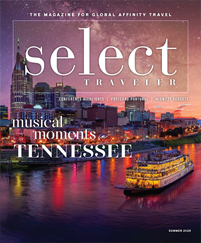To glance at Wichita, Kansas, today, you would never know that lawmen like Wyatt Earp once rode into town to keep the local cowboys under control. And you may not think of the city as a destination for prairies filled with colorful wildflowers, renowned art collections or unsurpassed aircraft production industries.
Wichita’s Wild West history, natural beauty, art and aviation heritage are on display for visitors at the city’s numerous museums. The Old Cowtown Museum, for instance, helps visitors appreciate the city’s intriguing history as a bustling cattle-drive stop.
These museums do more than fill an hour or two; they authentically present various aspects of Wichita’s heritage for a better understanding of the Midwestern town.
These four acclaimed Wichita museums will keep your travelers educated and entertained.
History: Old Cowtown Museum
Listen to horses trotting down the street, blacksmiths clanging on metal and occasional gunfire as you walk through the Old Cowtown Museum. The living-history museum re-creates Wichita in 1865 with 54 historic and re-created buildings, costumed interpreters and an artifact collection of more than 12,000 items.
Groups can walk down the dirt streets past period farm wagons, the City Marshal’s Office, the Southern Hotel and the General Store. Inside the city’s saloon, visitors can quench their thirst by sipping on sarsaparillas.
“It provides an authentic Old West experience,” said Susie Santo, president and CEO of Visit Wichita. “You really get a flavor of what it was like for early settlers. It really stands out among other experiences in the country.”
Pioneer trader Jesse Chisholm established a trading post at the site in the 1860s when he established what would become the famous cattle-drive route known as the Chisholm Trail. With the influx of cowboys came a revolving list of well-known lawmen such as Earp, hired to keep the rowdy group in line.
The museum preserves this exciting time in Wichita’s history to tell the story of how Wichita transformed from a frontier settlement to a cattle town to an agricultural and manufacturing area. Established in 1952, the museum is one of the oldest open-air history museums in the central United States.
Groups can schedule a guided tour, an educational program or wander the 23 acres on their own.
Nature: Botanica Wichita
Stand still and breathe in the sweet fragrance of more than 120,000 daffodil bulbs each spring at Botanica Wichita. The botanical paradise brings the blooms of the region to the spotlight with 18 acres of landscaped gardens divided into more than 30 themed gardens and exhibits.
Groups can gaze at native flora and other flowers suited to Wichita’s growing climate. Visual stunners abound in the garden year-round, with Kansas’ largest tulip display in spring, vibrant summer prairie wildflowers, more than 5,500 chrysanthemums in autumn and 12,000 pansies in winter.
“For groups, it’s a unique and authentic experience,” said Santo. “They can go for a stroll and enjoy the spectacular garden.”
Botanica Wichita first welcomed visitors in 1987 with four gardens and a horticultural library. The garden has since undergone many expansions, including the 2015 addition of the Chinese Garden of Friendship to celebrate the city’s relationship with its Chinese sister city, Kaifeng.
One popular exhibit sits inside the 2,880-square-foot Butterfly House. Up to 50 species of butterflies fill the venue with flying color from June through September. Another favorite, the Cissy Wise Wildflower Meadow, showcases native wildflowers in a naturalistic prairie garden filled with spiderwort, penstemon and asters.
Groups can tour solo or with a guide, for a more educational focus.









